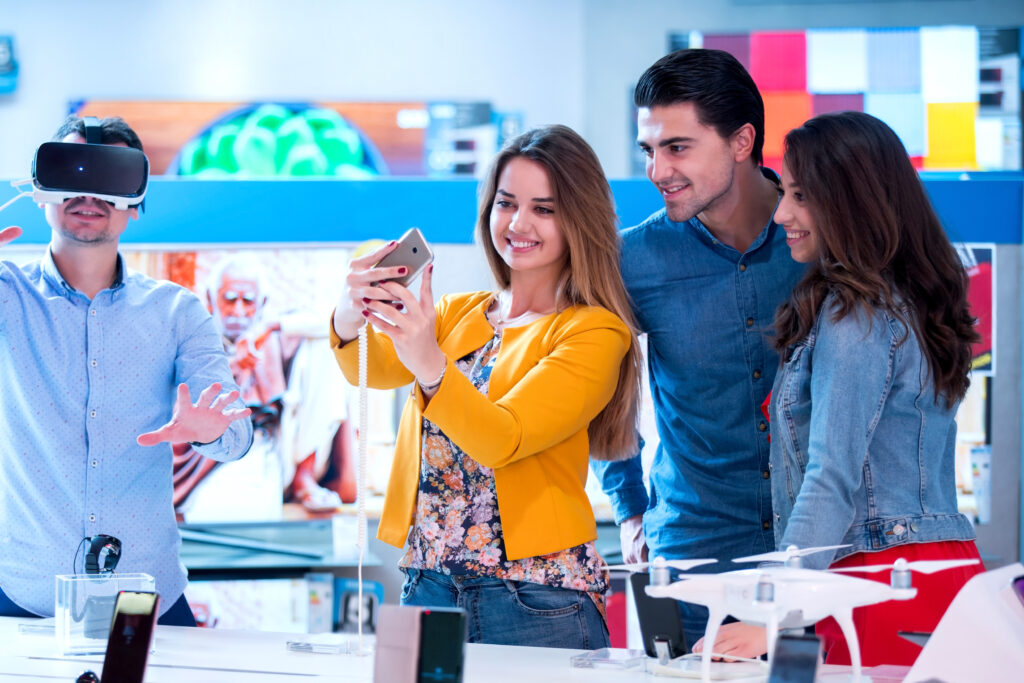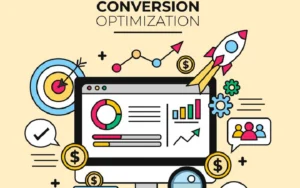Transforming Retail Store Interior Design
Step into the world of retail store interior design, where creativity meets commerce. The layout and aesthetics of a store play a pivotal role in captivating customers and influencing their purchasing decisions. Join us on a journey to explore how strategic design can transform retail spaces into immersive experiences that drive sales and enhance customer satisfaction. Welcome to the realm of Retail Store Interior Design!
Understanding the Target Customer and Their Shopping Behavior
Understanding the target customer and their shopping behavior is a crucial aspect of Retail Store Interior Design. It involves delving into the demographics, preferences, and habits of your potential buyers. By analyzing data and conducting market research, retailers can gain valuable insights to tailor their store layouts accordingly.Different age groups have varying shopping behaviors; for instance, millennials tend to value experiences over products, while older generations prioritize convenience. This knowledge can influence decisions on elements such as lighting, seating areas, or interactive displays within the store.Moreover, understanding how customers move through a space can help optimize traffic flow and strategically place high-margin items or promotional displays in prime locations. Creating a seamless journey from entrance to checkout enhances the overall shopping experience and encourages repeat visits.
Incorporating these insights into Retail Store Interior Design ensures that the space resonates with customers on a deeper level. Tailoring the design to meet their needs ultimately leads to increased engagement and conversion rates within the store environment.

Utilizing Technology in Retail Store Interior Design
In the ever-evolving world of retail, technology plays a vital role in shaping the interior design of stores. From interactive displays to smart lighting systems, the possibilities are endless when it comes to integrating tech into retail spaces.One way technology is enhancing retail store design is through augmented reality (AR) and virtual reality (VR) experiences. Imagine trying on clothes virtually or visualizing how furniture would look in your home before making a purchase – these advancements create a more immersive shopping experience for customers.Digital signage is another key technological tool that can transform store interiors. Dynamic displays can showcase promotions, product information, and even engage shoppers with interactive content, ultimately driving sales and enhancing brand perception.
Furthermore, incorporating IoT (Internet of Things) devices like smart mirrors or RFID tags can personalize the shopping journey by providing real-time recommendations based on customer preferences and behaviors.
By embracing technology in retail store interior design, businesses can stay ahead of the curve and deliver engaging experiences that resonate with modern consumers.
Incorporating Sustainability and Eco-Friendly Retail Store Interior Design
In today’s retail landscape, sustainability is no longer just a buzzword but a crucial aspect of interior design. Incorporating eco-friendly elements into retail store spaces not only aligns with the growing environmental consciousness of consumers but also sets businesses apart as responsible entities.
From using recycled materials for fixtures and furniture to implementing energy-efficient lighting solutions, there are various ways to create a sustainable retail environment. Designers can also opt for non-toxic paints and finishes, as well as eco-friendly flooring options like bamboo or cork.
By integrating plants and greenery throughout the store, retailers can bring nature indoors while improving air quality. Additionally, prioritizing natural light sources reduces the need for artificial lighting, contributing to energy savings.
Embracing sustainability in retail store interior design is not just about meeting a trend; it’s about making a positive impact on the planet while appealing to environmentally-conscious shoppers.
Creating an Immersive and Experiential Shopping Environment
Step into a retail store where the boundaries between shopping and entertainment blur. Imagine being greeted by interactive displays that respond to your touch, guiding you through a personalized journey of discovery. Picture yourself immersed in an environment that stimulates all your senses – from the soft lighting that sets the mood to the carefully curated scents that evoke emotions.
In this transformed space, every corner tells a story, every product has a purpose beyond its function. The layout is designed not just for efficiency but for engagement, encouraging exploration and fostering connection with both the products and the brand itself. Each visit becomes an experience to remember, leaving you with more than just items in hand but memories to cherish.
By creating an immersive and experiential shopping environment, retailers are revolutionizing the way we shop. They are transforming mere transactions into memorable interactions, turning ordinary visits into extraordinary moments of delight and discovery. Welcome to a world where shopping is no longer just about buying – it’s about experiencing something truly special.
Case studies of successful Retail Store Interior Design transformations
Let’s delve into some intriguing case studies that showcase the power of transformative retail store interior design.
In a well-known clothing boutique, a shift towards minimalistic and modern aesthetics led to increased foot traffic and longer dwell times. By incorporating sleek displays and cozy seating areas, customers felt more inclined to explore the store for extended periods.
Another example is a tech retailer that revamped its layout to include interactive product demos and digital screens displaying real-time reviews. This immersive experience not only drove sales but also cultivated a loyal customer base drawn to the innovative shopping environment.
Furthermore, a local bakery reimagined its space by introducing an open kitchen concept where customers could witness the baking process firsthand. This transparency not only boosted sales but also fostered a sense of community among patrons who appreciated the authentic behind-the-scenes experience.
These case studies exemplify how strategic design changes can elevate the overall customer experience and drive business success in diverse retail settings.
Future Trends in Retail Store Interior Design
As we look towards the future of retail store interior design, it’s clear that innovation and creativity will continue to shape the industry. One exciting trend on the horizon is the integration of augmented reality (AR) and virtual reality (VR) technologies within store layouts. Imagine being able to try out different products virtually before making a purchase.
Another key trend is the emphasis on creating multi-functional spaces within stores. Retailers are increasingly focusing on designing areas that can serve multiple purposes, such as hosting events, workshops, or even pop-up shops. This flexibility allows for a more dynamic shopping experience.
Sustainability is also set to play a significant role in future retail design trends. Consumers are becoming more environmentally conscious, driving retailers to incorporate eco-friendly materials and practices into their store designs. From energy-efficient lighting to recycled fixtures, sustainability will be a defining feature of tomorrow’s retail spaces.
The future of retail store interior design holds endless possibilities for innovative concepts that blend technology, functionality, and sustainability seamlessly together.
Conclusion
The impact of a well-designed retail space on sales and customer experience cannot be overstated. By focusing on Retail Store Interior Design that caters to the target customers, incorporates technology, sustainability, and offers immersive experiences, retailers can create a space that not only attracts but also engages shoppers.
Successful case studies have shown how transforming retail store interiors can lead to increased foot traffic, longer dwell times, higher conversion rates, and ultimately drive sales. As the retail landscape continues to evolve rapidly, staying ahead of trends in design is crucial for businesses looking to stand out in a competitive market.
In today’s fast-paced world where online shopping competes with brick-and-mortar stores, creating an exceptional in-store experience has become more important than ever. A well-designed retail space not only enhances the overall brand image but also leaves a lasting impression on customers, encouraging repeat visits and fostering loyalty.
Investing in Retail Store Interior Design is not just about aesthetics; it’s about creating a holistic shopping environment that resonates with consumers on multiple levels. By prioritizing design elements that align with the brand identity and customer preferences while embracing innovation and sustainability practices, retailers can transform their stores into engaging destinations that drive both sales and customer satisfaction.

Fran Peters is a dedicated writer specializing in health and medical content. With a background in healthcare and a passion for helping others lead healthier lives, Fran brings a wealth of knowledge and expertise to her writing.















Post Comment